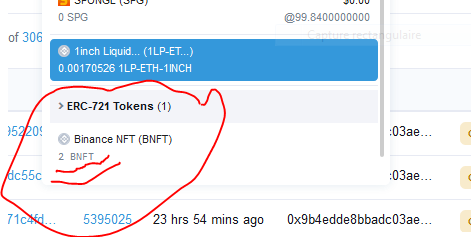DEFI AND NFT AT A MEETING POINT: Beginner’s Guide (Part 2)
In the previous post, it’s promised that we shall look at how NFT is created and the evolution of NFT.
We shall begin this discourse with an example I cited in the previous post. There, it’s said that a gold bar is fungible because they are weighed equally and they have the same shape. However, they cease to be fungible when they are given numbers or marked in any form. The numbers or marks they are given could be classified as “standard.”
Similarly, coins and tokens are fungible. A Coin or token ceases to be fungible when it is made to be unidentical in specification within its ecosystem. In other words, when tokens are given marks that differentiate them from each other, in such a way that no one token is similar to the other, they are classified as non-fungible tokens. As a result, we say that non-fungible tokens contain identifying information recorded in their smart contracts. This identifying information is what is known as “Standard.”
It’s this information that makes each NFT different and as such, they cannot be directly replaced by another token. They cannot be swapped like for like, as no two are alike. Banknotes, in contrast, can be simply exchanged one for another, if they are the same value, there is no difference to the holder.
More so, just as I pointed in my previous post that NFT is indivisible, it is this identifying information recorded in their smart contracts that makes it indivisible. Fungible goods, assets or tokens can be divided and still be exchanged without losing its essence. For instance, $1, 1Btc or even one Gold bar can be divided into $0.5, 0.5Btc or half Gold bar and still be interchangeable. In contrast, you cannot divide a house, a football ticket or a gold bar that is given a mark without altering their essence. Therefore, this identifying information makes non-fungible tokens to be always a whole number. There is no fraction like 0.5 and others in Non-fungible tokens. They are always 1,2,3… There’s nothing like I want to purchase 0.2 NFT. It must be 1 or more whole numbers.
The unique information of a non fungible token is stored in its smart contract and immutably recorded on the token’s blockchain.
Non-fungible tokens and their smart contracts allow for detailed attributes to be added, like the identity of the owner, rich metadata, or secure file links. The potent of non-fungible tokens to immutably prove digital ownership is an important progression for an increasingly digital world. They could see blockchain’s promise of trustless security applied to the ownership or exchange of almost any asset. Well, let us not go into the benefits now.
I had previously promised to give the evolution of NFT in this section. Please permit me to assign it to another post as i would not like to bug my good readers with long overstretched posts.

